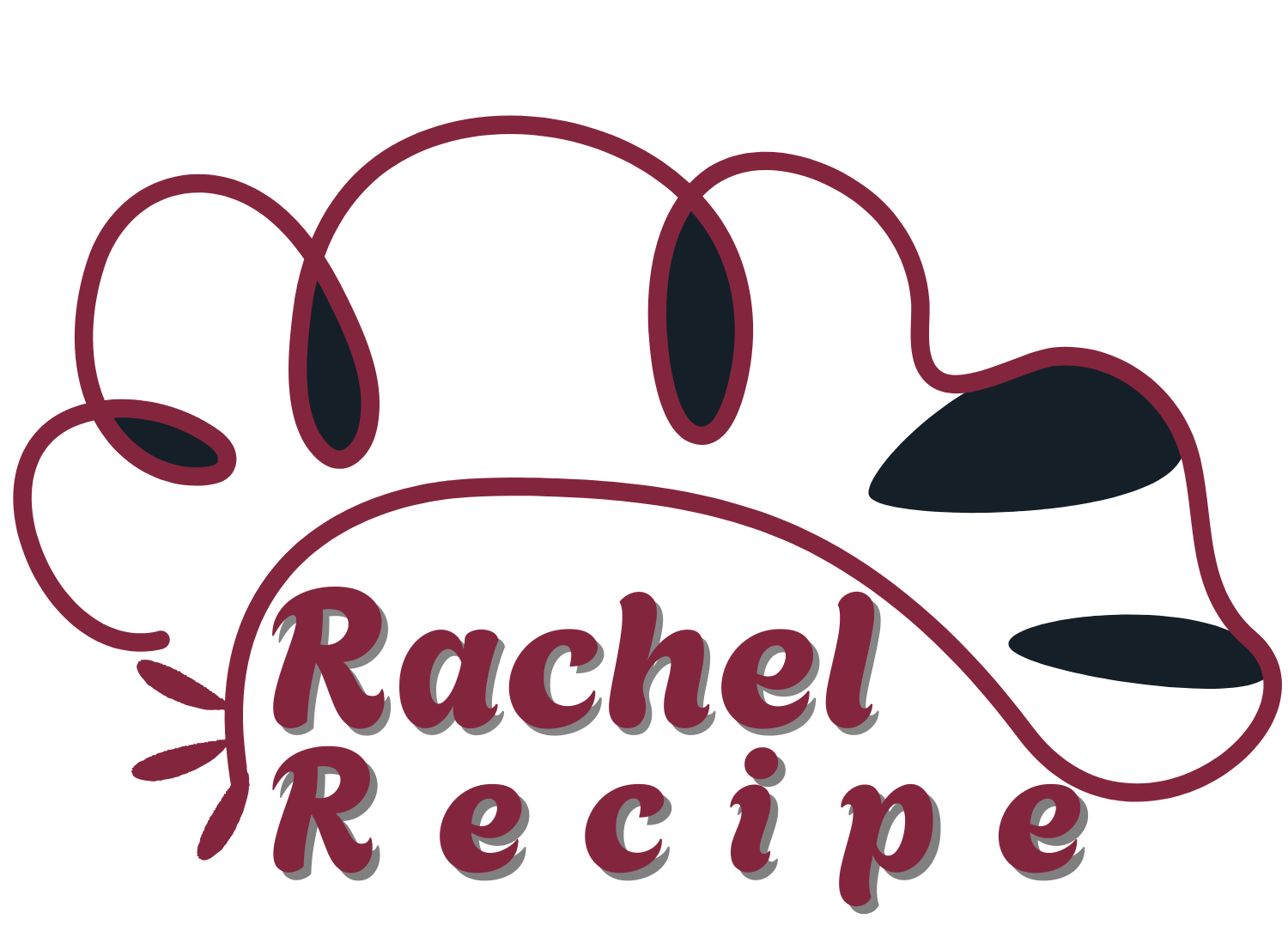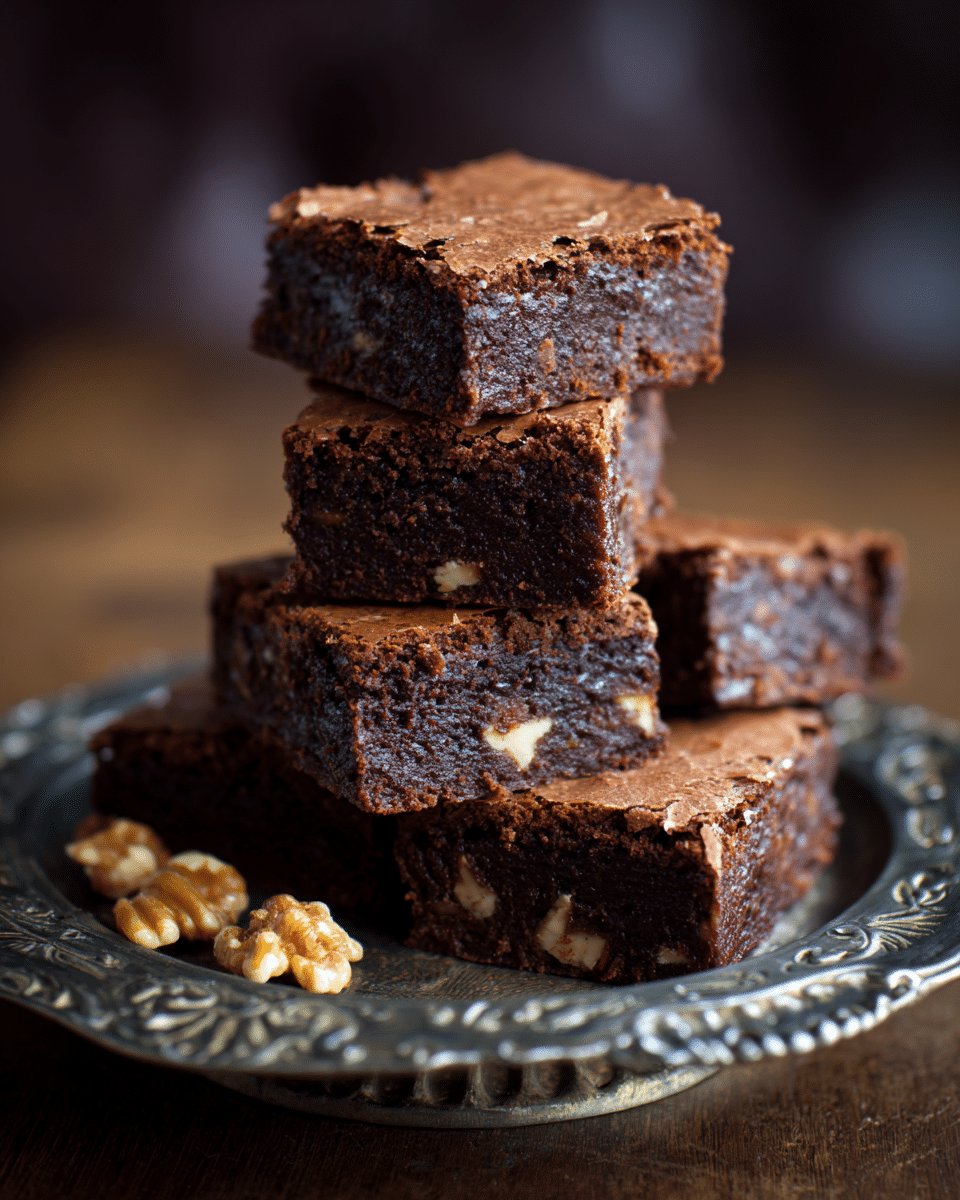Katharine Hepburn’s brownie recipe is a masterclass in simplicity, flavor, and fudgy richness. With minimal flour and a bold hit of cocoa, these brownies are soft, dense, and full of chocolatey depth—no melted chocolate needed. Toasted walnuts provide texture, while a touch of espresso powder deepens the flavor profile, turning an everyday dessert into something utterly crave-worthy.
Unlike many brownie recipes that aim for a shiny top or cakey texture, these stay true to fudgy roots, with a rich center and just enough chew. They’re ideal for sharing at gatherings or enjoying solo with a cup of coffee. Hepburn’s trick? Let the cocoa shine, skip the excess flour, and embrace the old-Hollywood simplicity of a really good brownie.
Full Recipe:
-
1/2 cup (1 stick) unsalted butter
-
1/2 cup high-quality cocoa powder (preferably Dutch-process)
-
1 cup granulated sugar
-
1/4 cup all-purpose flour
-
1/2 teaspoon kosher salt
-
2 large eggs
-
1 teaspoon vanilla extract
-
1/2 tablespoon espresso powder (optional but recommended)
-
1 cup roughly chopped, toasted walnuts
-
Butter and parchment paper for greasing and lining the pan
Directions:
-
Preheat your oven to 325°F (165°C).
-
In a medium saucepan, melt the butter over medium heat.
-
Whisk in the cocoa powder until smooth. Remove from heat and let cool slightly.
-
In a separate bowl, mix the sugar, flour, and salt.
-
Crack one egg into the cocoa-butter mixture and whisk thoroughly. Add the second egg, vanilla extract, and espresso powder. Whisk until smooth.
-
Gently fold in the dry mixture and walnuts until just combined.
-
Grease an 8-inch square aluminum baking pan with butter and line with parchment paper, leaving a 2-inch overhang on two sides.
-
Pour the batter into the prepared pan and smooth the top.
-
Bake for about 30 minutes, or until a toothpick inserted comes out with a few moist crumbs.
-
Allow brownies to cool completely at room temperature before slicing into squares.
Prep Time: 10 minutes | Cooking Time: 30 minutes | Total Time: 40 minutes
Kcal: ~235 kcal per brownie | Servings: 9 large or 12 small brownies
A Legendary Recipe With Hollywood Roots
Katharine Hepburn was more than just an iconic actress of Hollywood’s Golden Age. She was also known for her fiercely independent personality, her wit, and as it turns out—her brownies. Yes, brownies. A humble, chocolate-rich recipe that captured the hearts of food lovers and bakers around the world after being published in the New York Times following her death in 2003.
These aren’t your average brownies. They are simple, indulgent, and deeply chocolatey, with an elegant fudginess that you wouldn’t expect from such a minimalist formula. But that’s precisely what makes them so special.
The Story Behind the Brownies
The origin of Katharine Hepburn’s famous brownie recipe is as endearing as the dessert itself. According to culinary lore, Hepburn shared the recipe with a neighbor or fan during a casual exchange. It was eventually published in an article, and later gained traction in the New York Times, where it has become one of the paper’s most beloved and frequently made dessert recipes.
Over the years, the recipe has gained a cult following, not only because of its simplicity but also due to the legacy of the woman behind it. Hepburn’s straightforward approach to life is reflected in her brownies: unfussy, bold, and satisfying.
Why These Brownies Stand Out
What sets these brownies apart is the deliberate use of minimal flour—just a quarter cup—paired with a generous amount of cocoa powder. This balance is essential for creating a texture that is fudgy without being underbaked or sticky. They aren’t cakey, nor are they overly dense. Instead, they walk a fine line between the two, resulting in a melt-in-your-mouth consistency that makes every bite rich and satisfying.
Unlike other brownie recipes that might call for melted chocolate or extensive whisking, this one keeps things uncomplicated. That means no water baths, no fancy mixers, and no baking gymnastics. Just quality ingredients and Hepburn’s no-nonsense method.
The Power of Less Flour
One of the most distinctive aspects of this recipe is its low flour content. While most brownie recipes hover around ¾ to 1 cup of flour, Hepburn’s uses only ¼ cup. This significantly reduces the amount of gluten formation, which in turn prevents the batter from becoming too firm or dry.
Instead, the result is a fudgy interior that doesn’t feel dense or overly rich. The cocoa powder binds with the butter and eggs to create a luxurious, almost truffle-like bite, while the flour offers just enough structure to hold everything together.
This clever ratio highlights how the manipulation of simple baking chemistry can lead to a drastically different outcome—one that feels indulgent but still balanced.
No Shiny Top? No Problem.
For some brownie aficionados, the presence of a shiny, crackly top is a badge of honor. It often comes from whipping eggs and sugar to the point where they form a meringue-like layer that crisps on top during baking. However, Hepburn’s brownies deviate from this trend.
They skip the intense aeration phase and instead mix wet and dry ingredients more gently. As a result, you won’t get the signature shiny crust. But what you will get is a robust chocolate flavor and a soft, chewy texture that arguably makes up for the lack of sparkle. Some would even argue that these brownies don’t need the glitz—they’re Hollywood royalty in their own right.
A Touch of Espresso and Toasted Walnuts
Though not part of the original published recipe, modern adaptations often include two subtle yet effective enhancements: espresso powder and toasted walnuts.
Espresso powder intensifies the cocoa flavor without making the brownies taste like coffee. It’s a trick often used by pastry chefs to deepen chocolate complexity and bring out earthy, slightly bitter notes. Even just half a tablespoon can make a noticeable difference.
Toasted walnuts, on the other hand, add texture and a slightly savory, buttery crunch that complements the brownie’s richness. They also lend a nostalgic, old-fashioned feel to the recipe—something you can imagine Hepburn herself enjoying with a cup of tea or a stiff cocktail.
The Importance of Cocoa Quality
Since this recipe relies on cocoa powder rather than melted chocolate, the quality of that cocoa becomes incredibly important. Opting for a Dutch-process or high-quality natural cocoa powder can make or break the flavor.
Dutch-process cocoa is less acidic and gives a smoother, more mellow chocolate profile. It’s ideal for baked goods where you want richness without bitterness. Meanwhile, natural cocoa offers a sharper, more acidic bite that some people love in contrast with sweet sugar and butter. Either way, choose wisely—it’s the backbone of this dessert.
Effortless Technique, Big Flavor
Another notable characteristic of this recipe is its simplicity. The entire process can be done with just one saucepan and one mixing bowl, meaning fewer dishes and less cleanup. From melting the butter to folding in the dry ingredients, the technique is forgiving and beginner-friendly.
The baking time is relatively short—about 30 minutes—and the brownies store well at room temperature or even in the freezer. That makes them ideal for making ahead for parties, gifting to friends, or enjoying slowly over several days.
The low-maintenance approach also mirrors Hepburn’s own personality: elegant, efficient, and delightfully no-frills.
Adaptability for Modern Bakers
While the original version of the recipe is nearly perfect as-is, it also serves as a flexible template for variation. Want to make it gluten-free? Substitute the flour with a 1:1 gluten-free blend. Need a dairy-free version? Use plant-based butter.
You could also experiment with add-ins such as dark chocolate chips, shredded coconut, or even a swirl of peanut butter. But for purists, sticking to the essence of Hepburn’s original recipe keeps the charm alive.
Cultural Legacy in a Baking Pan
Food has a way of carrying history, and this brownie recipe is a prime example. It’s not just a dessert; it’s a reflection of Katharine Hepburn’s legacy—strong, uncomplicated, and enduring. Baking these brownies connects you not only with a timeless sweet treat but also with the cultural fabric of old Hollywood.
In an age where recipes are often over-engineered, there’s something refreshing about returning to the basics. Hepburn’s brownies remind us that good things don’t have to be complicated. Sometimes, a few high-quality ingredients, a mixing spoon, and a bit of oven time are all you need to create something magical.
Conclusion
Katharine Hepburn’s brownie recipe is more than a collection of ingredients; it’s a philosophy in edible form. It teaches us that simplicity can be decadent, that tradition can be innovative, and that even a silver-screen legend found joy in sharing a dessert from her kitchen.
Whether you’re a nostalgic baker, a chocolate devotee, or just someone looking for a reliable and rich brownie recipe, this one is sure to become a staple. Its ease, flavor, and historic charm make it a timeless classic worth baking—and sharing—again and again.






